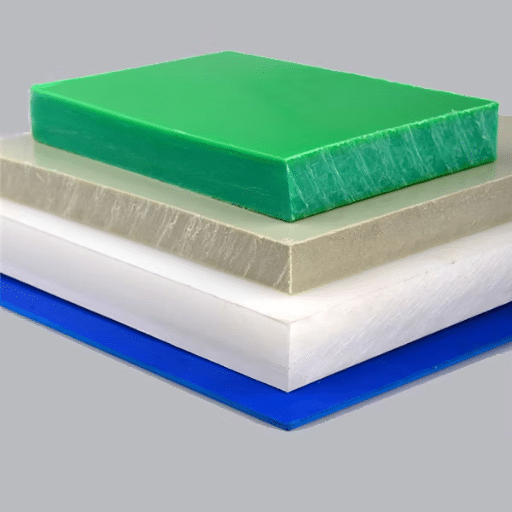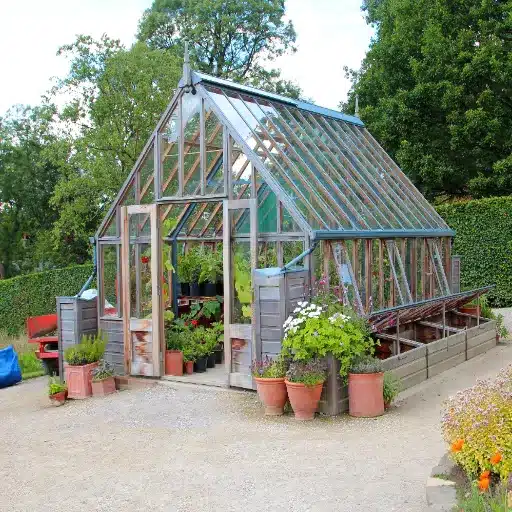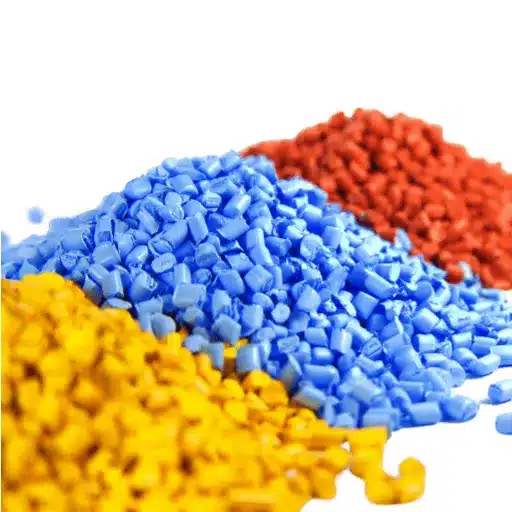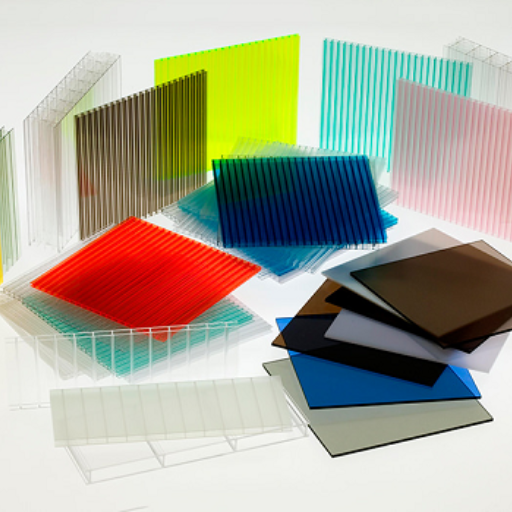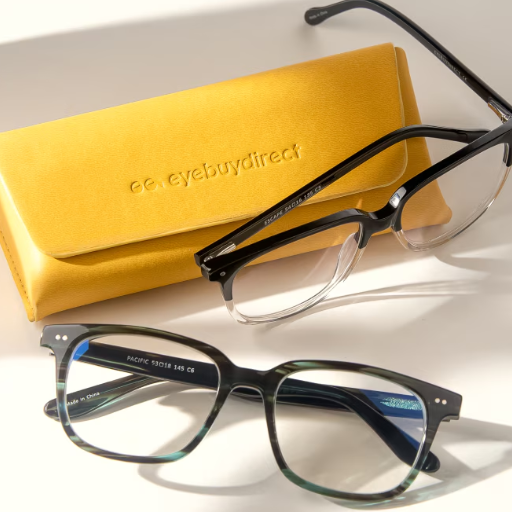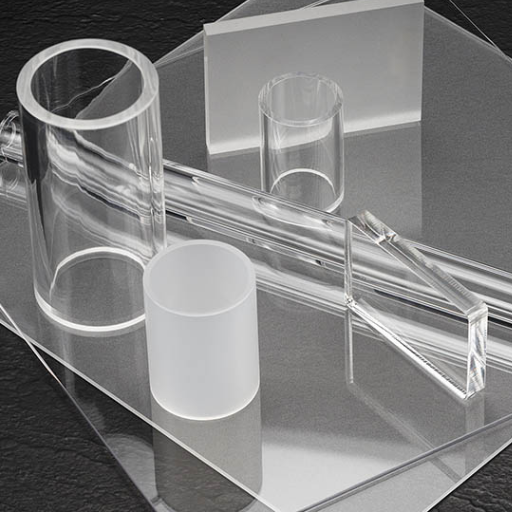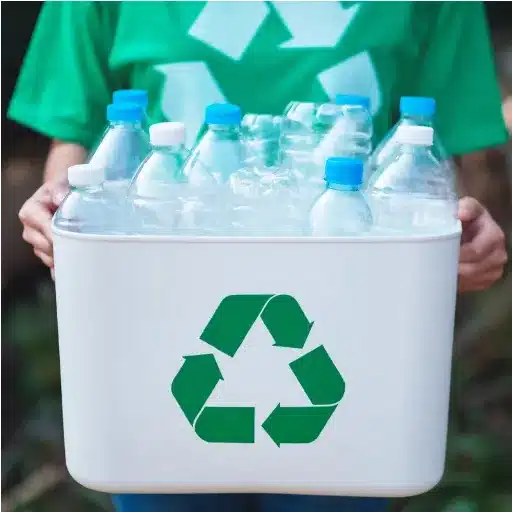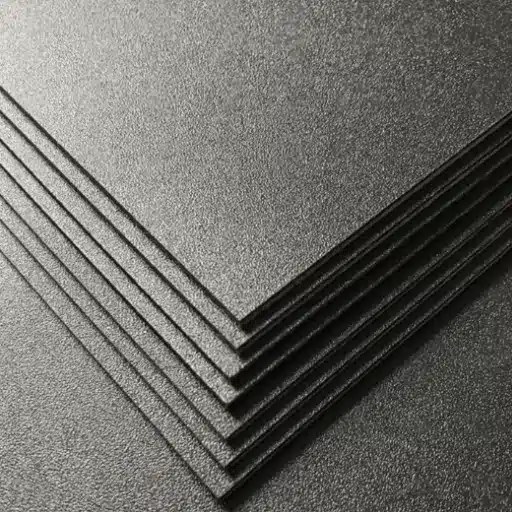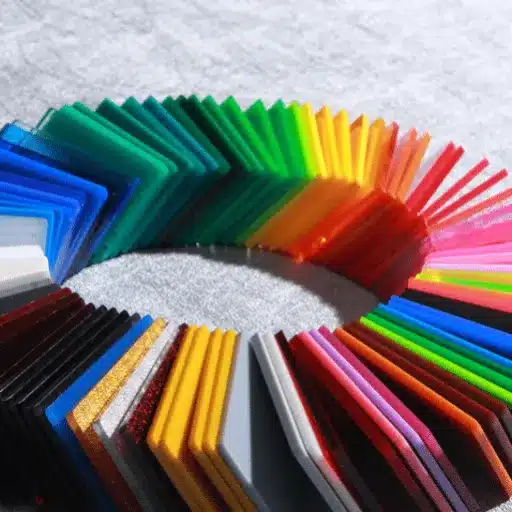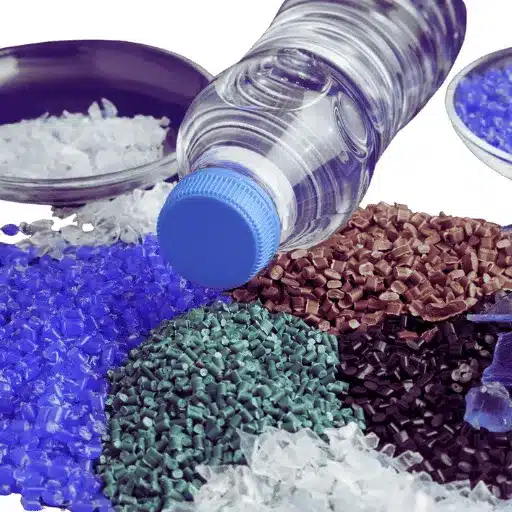The greenhouse plastic sheeting you use while gardening can either make or break the success. The perfect greenhouse film will not only shield your plants from severe weather but also provide a suitable environment for their growth by regulating light, heat, and moisture. Still, with the countless options, it can be a very difficult task to choose the right plastic for your greenhouse. By reading this guide, you will find the process a lot easier. We will look at the major factors such as longevity, protection against UV rays, and insulation which will aid your decision making. No matter if you are a professional gardener or a beginner, this article will give you the information you need to select plastic sheeting that is right for you and that ensures the development of healthy and continuous plants.
Understanding Greenhouse Plastic
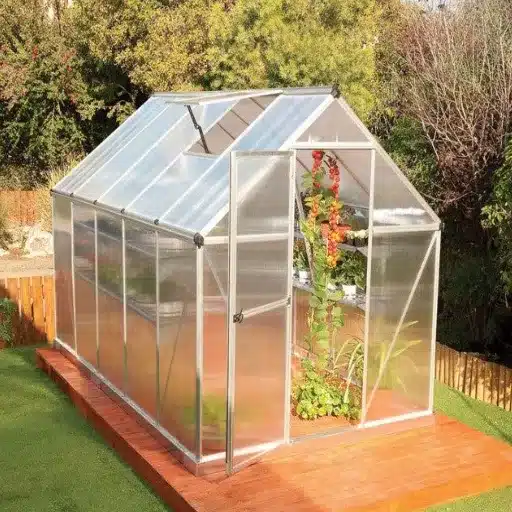
What is Greenhouse Plastic?
Greenhouse plastic is a proprietary plastic sheeting that is specifically made and best suited for the growth of plants by the means of heat and also safeguarding plants against external climate like wind, rain, and pests. The materials that have been traditionally used for making greenhouse plastic are polyvinyl chloride, polyethylene, and polycarbonate. This kind of plastic is made so that the sunlight can get through and at the same time it allows to keep the heat in and prevent the loss of moisture during the process of the plants’ growth.
Modern greenhouse plastics share common characteristics with additives for enhanced durability, UV protection against degradation under prolonged sunlight exposure, and insulation to keep different temperatures constant. It is not unusual for commercial and home garden together to use greenhouse plastic as a budget-friendly and multipurpose measure for better crop yield and longer growing periods.
Types of Greenhouse Plastic Sheeting
Different types of greenhouse plastic sheeting are there and each one is designed to fulfill the specific growing needs and environmental conditions. Below are the most standard variations:
1 Polyethylene Film
It is one of the most popular materials for greenhouse plastic sheeting thanks to its low cost and flexibility. It generally lasts from 1 to 4 years, depending on the thickness and the presence of UV-stabilizing additives. Polyethylene film can be purchased in several different grades, and the variations include single-layer or double-layer (for better insulation).
2 Polycarbonate Panels
Polycarbonate panels are very strong and have excellent light transmission so they are a long-term solution for greenhouses. They are impact-resistant, lightweight, and provide good insulation that makes them perfect for usage all year round. Even though they have a higher initial cost, they can last for more than 10 years.
3 Polyvinyl Chloride (PVC) Film
PVC films are strong and durable, and they last longer than polyethylene films. They also provide decent thermal insulation and high resistance to tearing. However, they may need extra UV protection layers to shield the plastic from degrading.
4 ETFE Film
Ethylene tetrafluoroethylene (ETFE) is a state-of-the-art material that is featherweight, tough, and extremely light-friendly. It is quite common in large, commercial greenhouses or high-tech agricultural projects. ETFE has a life span of 20 years and is self-cleaning but that comes at a price.
5 Woven Plastic Sheeting
This technology interlaces polyethylene threads with a laminate coating, giving it resistance to tearing and enhanced strength. Woven plastic sheeting is suitable for wind-swept or harsh areas in terms of weather resistance and is also commonly treated to prevent UV-related damage.
💡 Key Insight: The right choice of greenhouse plastic sheeting is based on the factors such as budget, climate, and type of crops grown. For a long-term investment along with superior insulation, polycarbonate or ETFE materials could be the best. But for short-term use, polyethylene films can turn out to be a practical choice being economical.
Benefits of Using Greenhouse Plastic
Greenhouse plastic advantages are many for different types of farming and gardening. The main advantage is its capability of maintaining a controllable environment which in turn allows farmers and gardeners to extend the period of plant growth and at the same time protecting crops from bad weather like frost, heavy rain, or high winds. One among other modern greenhouse plastic add-ons is UV stabilization which helps in reducing the harmful impacts that come with the prolonged sun exposure and at the same time it promotes healthy plant growth.
Actually, the utilization of high-priced greenhouse plastic works out better in terms of energy efficiency as it retains the human-made heat in the structure and hence, the heating costs are reduced in colder countries. Some new products such as multi-layer polyethylene or ETFE films are also, in turn, excellent for light diffusion, thus ensuring that the sunlight is evenly distributed all over and there is less chance of causing damages to plants from very intense direct rays.
The latest technology in greenhouses along with the user interest is rapidly increasing online. This is a clear indication that the use of strong, versatile plastic sheeting is now a very popular and suitable choice for both the casual gardener and large-scale agricultural users.
Choosing the Right Greenhouse Plastic
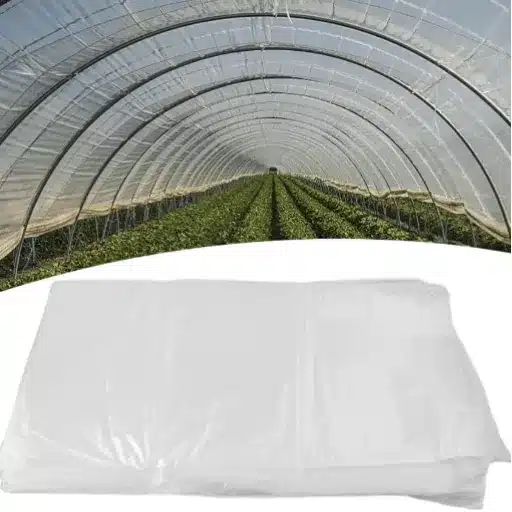
Factors to Consider When Selecting Greenhouse Plastic
It is necessary to assess greenhouses plastic and the several key factors that come along with the selection process in order to get the best possible performance and lifespan.
🔍 Key Selection Factors
- ✓
Durability: The material will be subjected to different weather conditions like being rained on, getting wind and sun exposure.
- ✓
UV Stabilization: This not only increases the plastic lifetime but also keeps it from being damaged by direct sunlight for the whole period.
- ✓
Light Transmission: The plastic should allow a very good percentage of sunlight to come through and disperse it evenly to avoid scorching hot spots.
- ✓
Cost-Effectiveness: Balance quality with cost, because sometimes inferior materials lead to higher long-term costs due to frequent replacements.
- ✓
Sustainability: Eco-conscious users are increasingly on the lookout for reusable plastics and other sustainable options that correspond to the current environmental concerns.
Making use of the aforementioned factors while picking greenhouse plastic can help one get a greenhouse that is not only more effective and productive but also less harming to the environment.
Understanding Thickness: 6 Mil vs. Other Options
Knowing the right thickness of the plastic for the greenhouse is very important in terms of durability, efficiency, and cost. The expression “6 mil” is referring to the plastic thickness which is the measurement in thousandths of an inch. A thickness of 6 mil is one of the most commonly used for greenhouses as a result of its remarkable durability and capability of withstanding environmental impacts like blowing winds, heavy rains, and UV rays for a long time.
| Thickness | Durability | Light Transmission | Best Use Case |
|---|---|---|---|
| 4 Mil | Moderate | Excellent | Temporary structures, mild climates |
| 6 Mil ⭐ | High | Very Good | Most popular choice, balanced performance |
| 8 Mil | Very High | Good | Harsh weather conditions |
| 10-12 Mil | Exceptional | Moderate | Commercial operations, extreme climates |
Compared to opting for thinner alternatives such as 4 mil plastic, the 6 mil plastic variant overall gives more benefits such as really long-lasting and insulating properties up for colder climates. While these thicker plastics do give you even more durability, they might also cut transmission of light a little bit and will cost more to purchase. But if the application is extreme or the facility is a commercial greenhouse, the extra durability can be an investment worth the money. All in all, it is a matter of deciding according to the specific requirements of your greenhouse, which are: climate, budget, and the types of plants you will be growing.
UV Resistance and Longevity of Greenhouse Films
One daylight source to which greenhouse films are constantly exposed is UV radiation, making UV resistance a very important property. Usually, super UV defeating inhibitors are the most common method employed to protect modern greenhouse plastics that are the strongest and most reliable. They help to extend plastic life by furnishing them with a barrier against UV rays that cause melting.
📊 Lifespan Statistics
- Quality Polyethylene Films: 3 to 5 years average lifespan
- With UV Stabilizers: Can extend lifespan significantly
- Advanced Additives: Anti-fog and anti-dust properties enhance durability
- High UV Areas: Require films with greater UV stabilization
Continuous UV exposure can lead to untreated plastics becoming weak, and eventually, the cracked ones, the ones that are brittle or the yellow plastic ones will all transmit less light which is the condition that is going to affect negatively plant growth. For the best outcome, the market will dictate the available greenhouse films that are rated for the grower’s particular climate zone, and they will have to be considered for replacement when they start losing UV protection as that will still ensure the best with the growing conditions and the plants’ being healthy.
Popular Types of Greenhouse Plastic
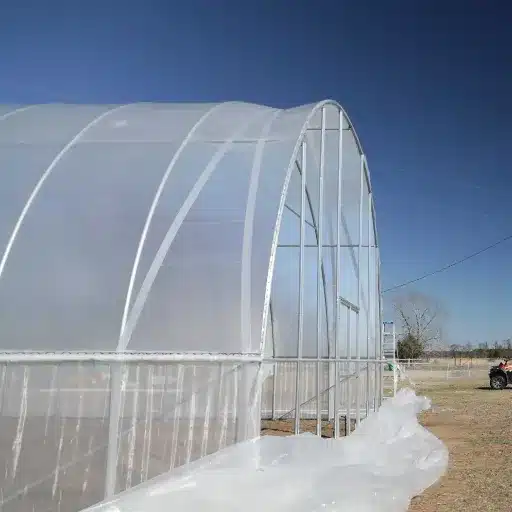
Polyethylene Greenhouse Plastic
Polyethylene greenhouse plastic is the one that has the greatest range of applications and is most cost-effective. This type of greenhouse material is usually manufactured from low-density polyethene (LDPE) or linear low-density polyethylene (LLDPE), giving it the characteristics of being both flexible and sturdy. It can be found in either a single-layer or a double-layer film, with the latter being more effective in terms of providing isolation for colder areas.
🔬 Advanced Features of Modern Polyethylene Films
- UV Inhibitors: Protects the plastic from degrading due to sunlight
- Anti-Condensate Treatments: Prevents dripping inside the greenhouse and improves light penetration
- Infrared (IR) Additives: Retains heat during cool nights for stable internal temperature
These features have been identified as the ones that play a significant role in productivity enhancement and power cost reduction, thus making the polyethylene greenhouse plastic a widely used option among farmers. While opting for polyethylene plastic, the growers should take into account such factors as temperature variations, the types of plants they wish to cultivate, and the extent of light and heat management that they require to get the best yield.
Polycarbonate Options for Greenhouses
Polycarbonate is the material that is taking the second place in the popularity ranking for greenhouse construction by virtue of its long-lasting quality and outstanding insulation characteristics. This plastic has the highest resistance against impact and can endure quite a lot in terms of extreme weather conditions such as heavy winds, hail, or snow, thus it is suitable for different climates. Its UV-resistant coating does a good job of keeping the plants safe from harmful rays while being perfectly light permeable, so plants can do their photosynthesis and grow healthy and vibrant.
In terms of thermal resistance, polycarbonate sheets are generally superior to polyethylene films, which may lead to lower heating costs in the winter. They can frequently be found with one wall, two walls and even three walls, and each wall added is giving a contribution to better energy efficiency and light diffusion. Plastics tend to be more expensive in terms of the first cost, but they are more durable and long-lasting, making them suitable for the growers who are going to invest in the long term rather than in the short term.
The newest information indicates that, because of its longevity and ability to withstand tough conditions, polycarbonate is the number one choice for commercial greenhouses, especially in places with severe weather. Growers will need to take into account the climate, their budget, and if they are going to use the greenhouse for long periods before deciding whether or not polycarbonate is the right option.
Comparing Greenhouse Cover Materials
Comparison between greenhouse cover materials requires assessing each choice’s pros and cons and taking consideration the latest evidence and research.
| Material | Advantages | Disadvantages | Best For |
|---|---|---|---|
| Glass | Maximum light clarity, excellent light transmission, long-lasting | Heavy, fragile, most expensive | Traditional greenhouses, permanent structures |
| Polycarbonate | Unmatched durability, excellent insulation, impact-resistant, UV-coated | Higher initial cost | Commercial greenhouses, harsh weather areas |
| Polyethylene Film | Most economical, flexible, multi-layer options available | Shorter lifespan, requires frequent replacement | Small-scale growers, seasonal operations |
In the end, the choice among glass, polycarbonate, and polyethylene film will depend on factors like climate, budget, and the purpose of the greenhouse.
Installation and Maintenance of Greenhouse Plastic Sheeting
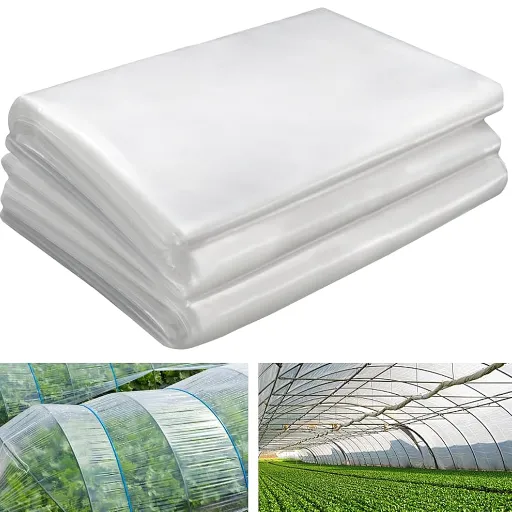
Steps for Installing Greenhouse Plastic
Prepare the Greenhouse Structure
The very first step is to make sure that the greenhouse structure is cleaning the frame, and it is also in good condition. The next thing to do is to check for sharp edges or debris that could damage the plastic sheeting. If there are any, remove them manually or with the help of sandpaper or padding, as smoothing out problem areas eliminates potential problems in the future. This is an important step to ensuring the longevity of the plastic sheeting.
Choose the Right Plastic Sheeting
Polythene film is strong and durable; or pick another material depending on your greenhouse and climatic needs. For instance, in locations that are sunny, UV-resistant plastic is highly suggested in order to avoid fast fading.
Measure and Cut the Film
To ensure perfect cutting, measure the dimensions of the greenhouse. Besides that, leave extra material at the edges so that the plastic can be fastened securely. Online tools and guides found via a search can help you in acquiring the correct film size calculations.
Attach the Plastic to the Frame
Securing the plastic sheeting is to be done starting at one side of the greenhouse usually the longer end using clamps or wiggle wire which is suggested in many professional guides. Moving gradually around the film keeping it taut so that wrinkles or sagging do not occur as this may lead to heat loss or being worn.
Seal and Secure the Edges
Strong tape, batten strips or greenhouse clips should be used to seal up all edges and corners completely. Check for tightness and smoothness again to keep wind from causing damage or moisture from leaking in. Proper sealing helps keep the heat inside.
Inspect and Maintain Regularly
Inspect the plastic sheeting often after installation for any signs of wear or damage, especially after severe weather. Replace or repair areas as needed to ensure the longevity of the greenhouse covering.
Maintaining Your Greenhouse Covering
In order to guarantee the effectiveness and lifespan of your greenhouse covering, it is very important that a proactive maintenance approach is taken. The key steps include checking for UV degradation as sunlight can weaken some covering materials over a period of time. Investing in cover materials with enhanced UV-resistant coatings is suggested by the trends as a way to counteract the degradation.
✅ Maintenance Checklist
- Regular inspection for UV degradation and physical damage
- Check and maintain UV-resistant coatings
- Apply anti-condensate treatments to prevent water buildup
- Monitor light diffusion quality
- Inspect seals and edges for air leaks
- Schedule timely replacements when protection deteriorates
Statistics point towards the rising demand for anti-condensate treatments to cut off the water layer’s growth that diminishes light diffusion and eventually harms your plants. Keeping informed about these advancements will turn your greenhouse into a long-lasting and productive asset.
Common Issues and Solutions
The issue of maintaining the appropriate range of humidity is undoubtedly a challenge for most greenhouse owners. If the humidity is too high it will cause mold growth, invite pests, and spread diseases among the plants. Low humidity, on the other hand, is not suitable for growing plants as it stunts their development.
💧 Humidity Control Solutions
Problem: High Humidity
Solutions: Install dehumidifiers, improve ventilation systems, use automated humidity control systems
Problem: Low Humidity
Solutions: Implement misting systems, use humidifiers, strategically place water containers
Many users are turning their interest towards automated humidity control systems, which help sustain ideal conditions by monitoring and adjusting moisture levels in real-time. Moreover, proper ventilation systems and fans placed strategically can also help in balancing humidity. By applying these combined methods and technological advances, greenhouse owners can not only mitigate the risks but also encourage the development of healthier and more robust plants.
Customer Reviews and Recommendations
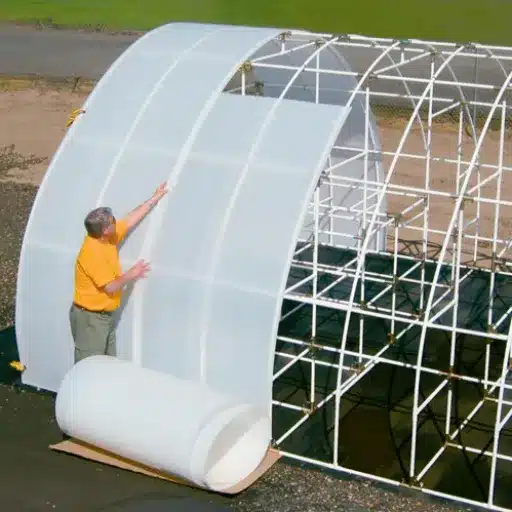
Top Rated Greenhouse Plastics by Growers
Fully supported by the most recent data and search trends, growers’ choice of greenhouse plastics is ranked according to their durability, UV protection, and excellent light diffusion properties.
⭐⭐⭐⭐⭐ Solexx Greenhouse Covering
Why Growers Love It: Received with affirmative feedback mainly for its heating and cooling features. Long life and capacity to create optimum conditions for plants.
⭐⭐⭐⭐⭐ Sun Master Greenhouse Film
Why Growers Love It: Praised for being robust in light transmission and having drip prevent technology. Excellent for year-round growing.
⭐⭐⭐⭐⭐ 4-Year UV Treated Clear Polyethylene Film
Why Growers Love It: Compatibility of price with performance makes it applicable for a large variety of crops and regions. Best value for money.
These plastics are getting constant support from good reviews and regular search interest, and thus remain in the market as the most trusted greenhouse covers.
Expert Opinions on Greenhouse Plastic Thickness
The specialists are all of the same opinion that choosing the right thickness of greenhouse plastic is the main factor for the successful growth of crops and the structure’s long-lasting life. A majority of them suggest the use of 6 mils thick plastic, as it is the best weight to help the light pass through and at the same time be strong.
👨🌾 Expert Recommendations
- 4 Mil Films: Better light transmission but require frequent replacement
- 6 Mil Films (Recommended): Optimal balance of durability, light transmission, and cost-effectiveness
- 8+ Mil Films: Ideal for cold climates, areas with heavy rain or storms, superior tear-resistance
Judging by the most current data, customers are turning more and more nowadays to the 6-mil polyethylene film due to its versatility and reliability. This change in behavior indicates that consumers tend to lean towards the materials of high endurance and also the specific requirements of assorted crops, which is in line with the expert’s opinions.
Case Studies: Successful Use of Greenhouse Films
📈 Case Study 1: Commercial Tomato Farm, California
Challenge: Looking to improve yield and reduce replacement costs
Solution: Switched to 6-mil polyethylene film
Results:
- 20% yield increase over three seasons
- Successful year-round growing capability
- Reduced replacement frequency
- Cost savings aligned with sustainability goals
🌿 Case Study 2: Small Herb Farm, Midwest U.S.
Challenge: Maintaining steady temperature for tender plants like basil and cilantro
Solution: Adopted 6-mil polyethylene film with UV protection
Results:
- Maintained steady temperature crucial for tender plants
- Healthier plants with vibrant growth
- Fewer pest issues due to better environmental control
These successful examples point to the growing demand as reflected in the search trends, where searches conducted for 6-mil greenhouse films have constantly been on the rise. The data clearly shows that farmers are inclined to use materials that possess both durability and performance traits, thus satisfying the needs of various agricultural practices. By adopting these films, farms of different sizes are able to reap the benefits of improved yield and cost savings.
Frequently Asked Questions
❓ What is the best greenhouse plastic for durability?
The most durable greenhouse plastic is often the one made of UV resistant polyethylene film. It is made to hold up against the weather and be able to last for years in durability terms. The 6 mil greenhouse plastic sheeting is the most commonly used amongst growers because it is thin enough to let in good light yet thick enough to provide protection against the sun. If a greenhouse is built in a location that suffers from very harsh weather conditions, it is worth spending a little extra for heavy duty covering. Moreover, 4-year UV ratings will give you confidence knowing that the area set for growing will not have to be changed frequently. Good mounting is also a very important factor in enlarging the life span of the greenhouse cover you are using.
❓ How does greenhouse plastic thickness affect performance?
Plastic thickness is one of the most important factors affecting the performance of the covered greenhouse because it directly affects both heat insulation and life of the material. The thickness is often measured in mils with heavy duty options such as 6 mil to 12 mil giving more protection against UV radiation and heavy snow. A 3-4 mil thick plastic might be perfect for temporary structures in mild areas but it will not last as long as thick plastic. Serious agricultural operations for growing or selling plants would almost always choose heavy-duty plastic material. Another point is, thicker plastics can result in better light diffusion, protecting plants from burning and also making the greenhouse more efficient. Knowing exactly what the right thickness is, will help fully utilize the greenhouse’s efficiency.
❓ What are the advantages of UV resistant greenhouse plastic?
UV resistant greenhouse plastic provides a plethora of advantages to both professional and lay growers alike. This plastic acts as a shield and thus plants will not be torched by the sun or slowed in their development due to ‘sunburn’ caused by the UV rays. Using plastics like 6 mil clear greenhouse or reinforced polyethylene gives one the assurance of full light without the negative effects of direct UV exposure being felt by the plants. In addition, the UV resistant varieties are already listed to have a long lifespan, and thus the future need for their change would be less frequent. This resilience is what also makes the initial cost of the investment more economical in the long run. Overall benefits of using UV resistant greenhouse plastics for growing plants, will be increasing this environment to be less harmful for plants.
❓ How do I pick the right greenhouse plastic for my setup?
Choosing the correct greenhouse plastic necessitates the consideration of a few factors associated with it, including your specific climate, the type of plants you are growing, and your financial capabilities. For example, if you live in an area that experiences very heavy snow, purchasing a thick mil polyethylene such as 6 mil or 12 mil would be a good idea. Furthermore, you need to think about whether or not you will require UV resistant features, depending on your type of plant. For growers who are on the verge of greenhouse just to maximize the usage of light while taking care that neither of their plants gets dried up by scorching, diffused light options can be an added benefit. Customer experiences can also help to predict the durability and effectiveness of various plastic films. Eventually, mapping out these factors will set you on the direction that leads straight to the best plastic for your greenhouse.
❓ What are the differences between polyethylene and polycarbonate greenhouse covers?
Polyethylene and polycarbonate greenhouse covers have their own sets of pros and cons, thus suiting different growing requirements. On the main, poly film is by far the cheapest and the easiest option of covering a greenhouse, and that is why it is very common among hobbyists and small-scale growers. Depending on the thickness, such as 6 mil for example, it has good or average UV resistance and light transmission properties. However, polycarbonate is the material that is guaranteed to last longer and provide better insulation, thus it is the most suitable for large-scale commercial greenhouses. Although polycarbonate is pricy, still its durability can make the initial cost bearable for serious growers. The best way of identifying the covering that fits your growing needs is by acknowledging your requirements.
Reference Sources
📚 University of Massachusetts – Plastic Greenhouse Film Update
This fact sheet discusses the high quality and durability of modern copolymer plastic films, making them a good choice for greenhouse glazing.
Source: University Extension Publication
📚 Washington State University Extension – Greenhouse Structures
This resource highlights poly film as the first choice for greenhouse glazing due to its low cost and effectiveness, as noted by the National Greenhouse Manufacturers Association.
Source: WSU Extension
📚 University of Georgia – Hobby Greenhouses
This publication explains the advantages of polyethylene, including its low cost, lightweight nature, and durability in various weather conditions.
Source: UGA Cooperative Extension






